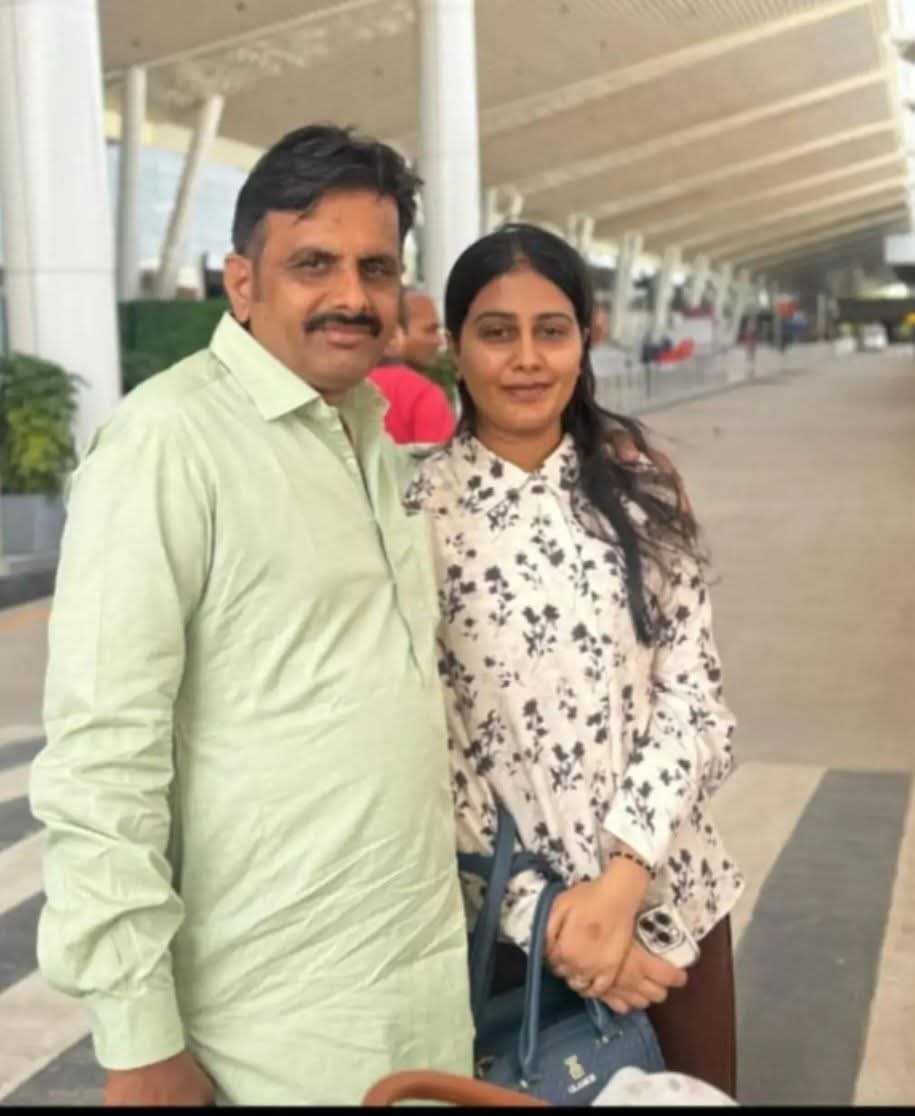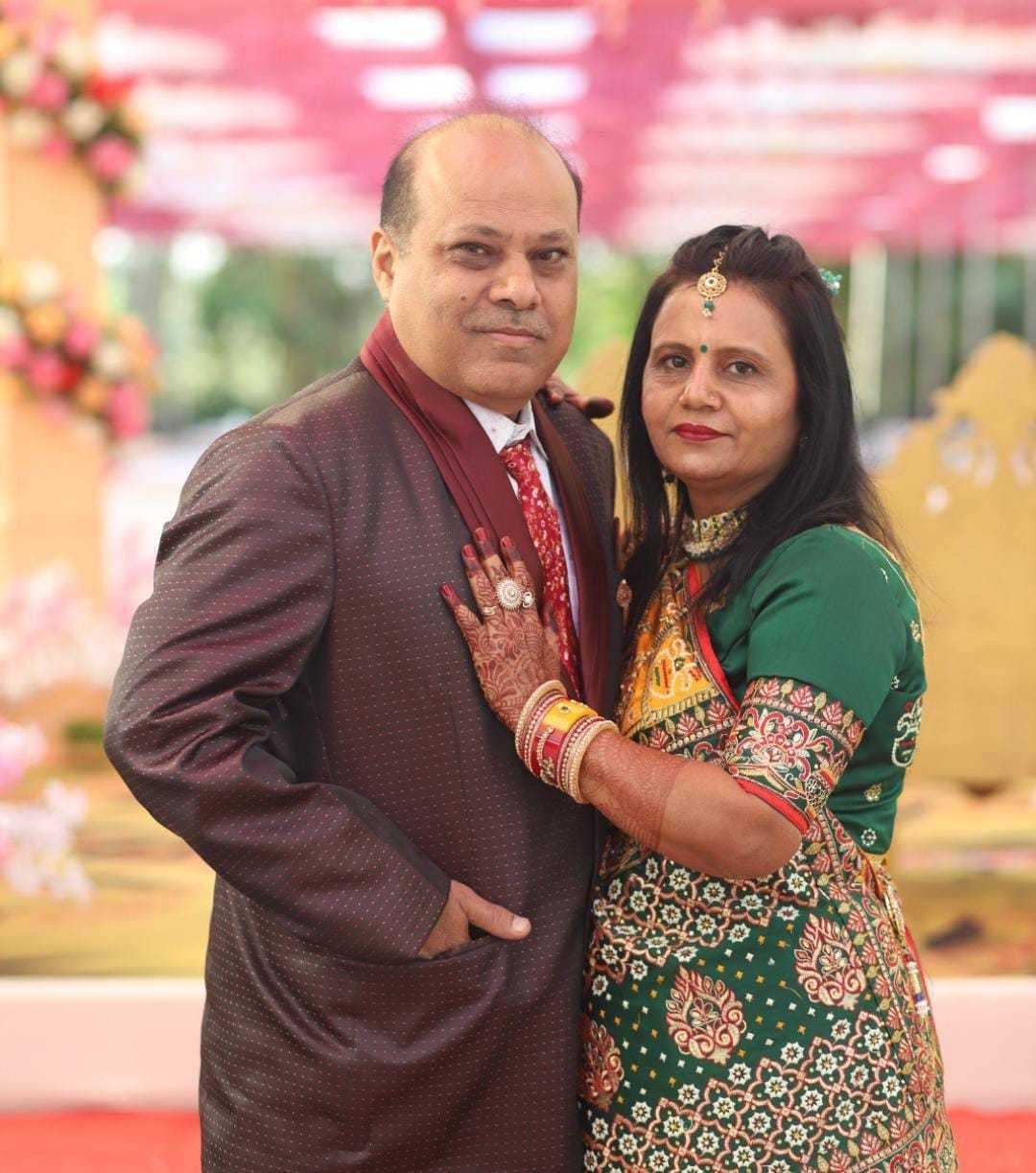Families grieve as Gujarat officials start handing remains of victims killed in Air India crash

It was a morning heavy with grief outside the Civil Hospital mortuary in Ahmedabad, where Khushboo Rajpurohit’s family gathered to reclaim her mortal remains, three days after the catastrophic Air India crash that left all but one of the 242 passengers dead.
Her uncle, Kishore Rajpurohit, had been waiting outside the complex since early morning. A government official had called the family to confirm the unimaginable: that Khushboo, a 21-year-old newlywed on her way to begin married life in London, had been identified through DNA testing.
“She got married on 17 January this year and was awaiting visa clearance to travel to London and live with her husband,” Mr Rajpurohit told The Independent. Her father had gone to see her off at the airport. “He waited till she boarded and had not even crossed Mehsana when we learnt of the crash.”
The final confirmation came on Sunday morning when a government-appointed nodal officer informed the family that the DNA results had matched.
Around 10am, they assembled outside the mortuary, holding on to each other for comfort as they waited for the formalities to conclude. A few hours later, Khushboo’s coffin was carefully loaded into an ambulance to be taken to her hometown of Jodhpur, in Rajasthan, accompanied by a police escort and an Air India vehicle.
“It will be handed over to the family with full honour,” Mr Rajpurohit said.

Khushboo’s was one of the 14 bodies handed over on Sunday, according to hospital officials. The identification process has been painstaking and slow, as most victims were severely dismembered in the explosion. Dr Rajnish Patel, Additional Superintendent of the Civil Hospital, revealed that another body was recovered only on Saturday from the tail of the aircraft.
The London-bound Boeing 787 struck a medical college hostel in a residential area of the northwestern city of Ahmedabad minutes after takeoff on Thursday, killing 241 people on board and at least 29 on the ground. One passenger survived. Hundreds of relatives of the crash victims provided DNA samples at the hospital. Most of the bodies were charred or mutilated, making them unrecognizable.
Of the many challenges faced by officials, the most sensitive has been piecing together the remains. A senior hospital official involved in the identification process told The Independent that the remains have to be “identified accurately and stitched together… We have to honour the dead”.
.jpg)
DNA matching, he added, takes between 48 to 72 hours per victim. At least 32 complete matches had been achieved so far, with more underway, said Dr Patel. Among those whose DNA match is confirmed includes former Gujarat chief minister Vijay Rupani.
Outside the hospital, a line of ambulances stood ready. Mahindra Singh, an ambulance driver from Kheda, a city in Gujarat, said he had been stationed there since Saturday morning. “We’ve been told to carry two bodies. Once the call comes, we leave. We’re not allowed to contact the families – only the nodal officers inform them.”
From Kutch, Bharat Godia had arrived with a fleet of five ambulances. “We were ordered by the district administration to collect the bodies. Government officials will accompany them,” he said.
At the Panchal house in Baroda, it was a call no one wanted to receive – certainly not at 12.30am. Shashi Panchal’s phone rang on Saturday night, bringing with it the final confirmation he had dreaded: the bodies of his elder brother, Narendra Panchal, and sister-in-law, Usha Panchal, had been identified through DNA testing.
The couple were among the 241 victims of the Air India crash that has devastated families across India and beyond. They were on their first trip to London to visit their only son, who is studying for a law degree in the UK.
“My nephew was supposed to come back in September,” said Mr Panchal, speaking outside Ahmedabad’s Civil Hospital on Sunday. “But my brother had suggested they visit him instead, and all three could return together.”
Mr Panchal, who had travelled from Baroda overnight, admitted the confirmation came as a crushing shock. “Actually, I didn’t even know they were on that flight,” he said. “When I heard what had happened … I can’t even begin to describe what was going through my mind. It was a very difficult time.”
He had been told to arrive at the hospital by noon, but delays in the formalities meant he had yet to see the mortal remains when The Independent spoke with him. Even so, he expressed gratitude for how the process had been managed. “The services have been good, the arrangements too. Whatever had to happen, has happened,” he said.

But no sense of order can fill the space left behind by the dead. When asked whether he sought an investigation into the tragedy, Mr Panchal said, “I just want to make sure something like this never happens again. The government and all the authorities must ensure that.”
“Because no matter how good the services are, they won’t bring back my brother and sister-in-law,” he added.
Alongside the formal investigation, the Indian government has set up a high-level committee to examine the causes leading to the crash. The committee will focus on formulating procedures to prevent and handle aircraft emergencies in the future, the Ministry of Civil Aviation said in a statement Saturday.
Authorities have also begun inspecting Air India’s entire fleet of Boeing 787 Dreamliners, Minister of Civil Aviation Ram Mohan Naidu Kinjarapu said on Saturday in capital Delhi at his first news briefing since Thursday’s crash.
Eight of the 34 Dreamliners in India have already undergone inspection, Mr Kinjarapu said, adding that the remaining aircraft will be examined with “immediate urgency.”
Investigators on Friday recovered the plane’s digital flight data recorder, or the black box, from a rooftop near the crash site.
The device is expected to reveal information about the engine and control settings, while the voice recorder will provide cockpit conversations, said Paul Fromme, a mechanical engineer with the UK-based Institution of Mechanical Engineers.
The plane that crashed was 12 years old. Boeing planes have been plagued by safety issues on other types of aircraft. There are currently around 1,200 of the 787 Dreamliner aircraft worldwide and this was the first deadly crash in 16 years of operation, according to experts.



